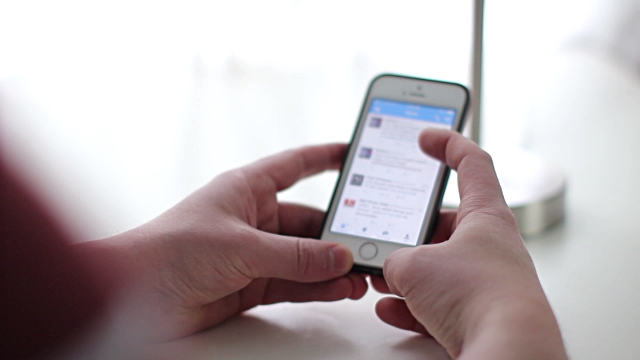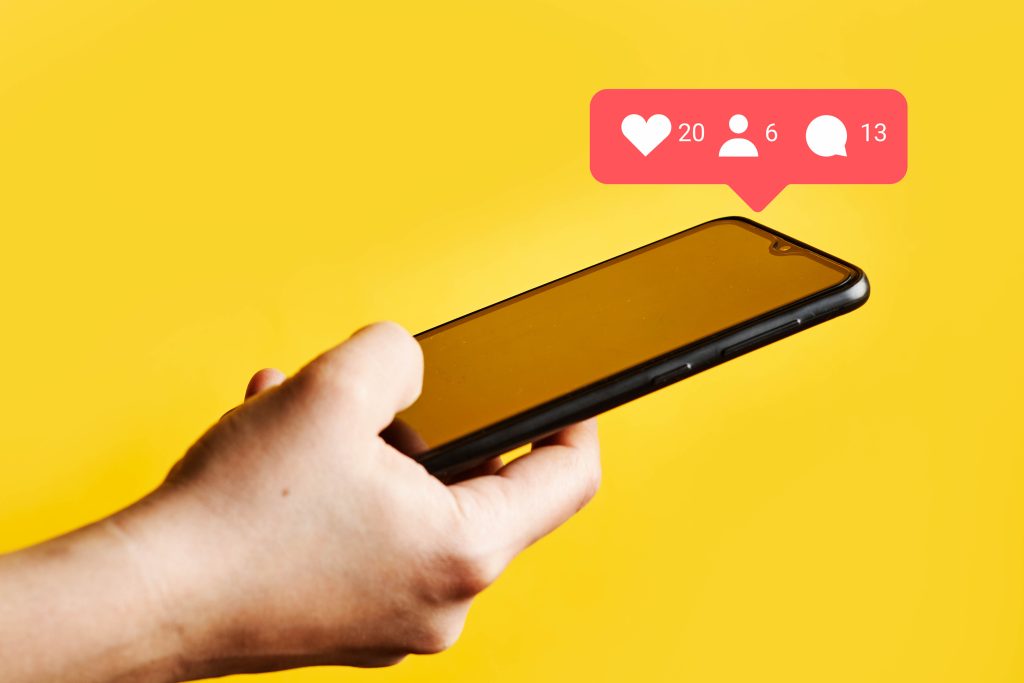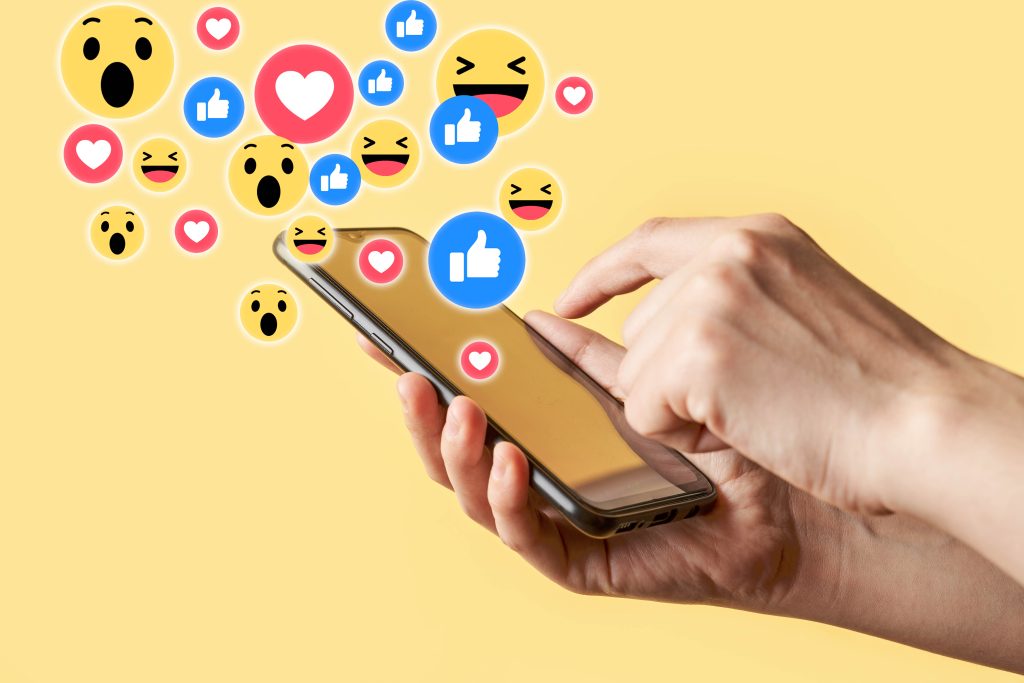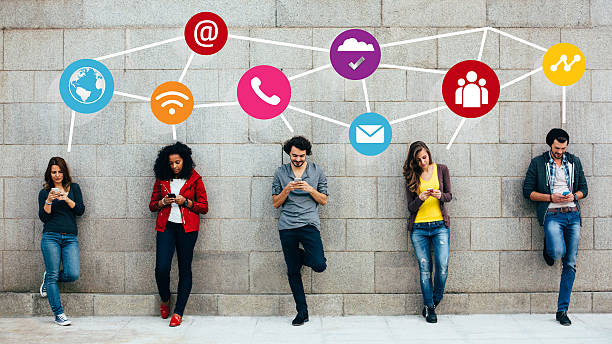


Introduction
Gen Z, also known as the net generation, is used to describe people who were born during the late 1990s and early 2010s, currently between the ages of 13 and 25. Prensky referred to those who have grown up in a digital world and are frequently surrounded by technology as “Digital Natives” (Prensky, 2005, pp. 29–30). Social media provides a platform for this generation, who value self-expression, to show themselves and keep close contact with peers. Therefore, they are highly engaged in social media (Ameen et al., 2021, pp. 4-5).
A study shows that most members of Gene Z have multiple social media apps, and 50% of them check their accounts more than once a day, emphasizing the importance of social media in this generation’s daily lives. However, Generation Z is nowadays facing many concerns related to their mental health, physical well-being, and safety. This can be attributed to them being consciously pushed by tech companies to overuse social media.
Tech Companies Intentionally Design Features and Control users
In the digital trading market, technological businesses want to stabilize their status by attracting large numbers of users so that advertisers can maximize their economic value. To achieve this goal, companies leverage persuasive technologies in the context of social media to subtly change users’ behavior and perception (Fogg, 2003).



- The purpose of the endless scroll is to keep users always online. It’s similar to the principle of intermittent reward gambling, where users are provided with new content by refreshing. This unconsciously reinforces their behavior.
- In order to allow users to respond to and interact with other people’s content, companies created “Still Typing…” on the chat page.
- Additionally, they designed notifications as a prompt, and users need to open the home page and see the full content, which triggers them to repeat the process.
These simple but gainable behaviors keep them engaging and coming back (Fogg, 2003, p. 33). There is no doubt that this also brings value to social media platforms and advertisers, thus forming network effects(Mansell and Steinmueller, 2020, p.38). Meanwhile, when the number of users keeps rising like a snowball, their tracks are digitized into prime resources and sold as products, allowing companies to deliver advertisements with more certainty and get commercial profits (Jose van, 2018, p. 33 and Zubbof, 2015, p. 79). It’s important to note that persuasive strategies were not created by child psychologists trying to protect and cultivate young people. so this is more impactless for the z-generation, who lack a social media-free experience. Due to the lack of “no social media” experiences, the Z-generation is at greater risk.
Out of Tech Companies’ Control
Gen Z has worse health conditions than any other generation. Morning Consult reports that 38% of Gen Z spend more than four hours a day on social media, far more than millennials and Gen X. Instagram and other image-centric social media are more overtly persecuting Generation Z than text-based platforms are (R. Engeln et al., 2020, p. 39).
Spirit






In an interview, Palihapitiya, the early senior executive of Facebook, stated: “The short-term dopamine-driven feedback chains we’ve created threaten the way modern society works.” Gen Z is particularly affected by this. They receive online validation and recognition through “likes” and “follows”. But this simplifies the process of realistic success and makes Gen Z rely on instant gratification. Consequently, they have a strong addiction to social media and are always online so they don’t miss updates or feel behind. This is also known as FoMO ( Fear of missing out) (Saavedra and Bautista, 2020, p. 109).
A young boy said
“I think it would be a little bit [messed up if social media disappeared]. I spend 99% of my time indoors in front of my computer, if I’m not playing games, I’m watching pirated videos. If I’m not watching videos, maybe I’m reading an article. I’m always online.“
Furthermore, there is a significant correlation between social media use and loneliness if the amount of “likes” is used as an indicator of popularity. More than any previous generation, 19% of Gen Z always feel lonely. They may now communicate extensively and closely with more people because of social media, but they are no longer able to receive emotional support from their peers.
Mental Health and Physical Well-being



Filtered and photoshopped images can cause young people to develop Body dysmorphic disorder (BDD), a psychological disorder in which people feel strongly dissatisfaction about their body shapes and facial features, most often in high school and college students. This is directly related to the widespread use of social media. First, they are always able to have an online appearance comparison (Tiggemann and Miller, 2010, pp. 80-81). Second, beauty standards on social media, including peers with perfect bodies and influencers with flawless faces, are idealized and unrealistic. This makes Gen Z spend a lot of time on their photos, enlarging the details and comparing with others, resulting in intense self-criticism and going to great lengths to deal with the pain related to appearance, such as undergoing cosmetic surgery. Notably, they pointed out flaws that could only be found in selfies, such as drooping lips or uneven lip color. A study shows that 75% Gen Z women have considered facial and body procedures, with lip fillers at the top of the list. A prime example is the “Pillow Face” filter on Instagram, which shows people with super plump lips after filler injections.
However, things don’t seem good in the real world. Shani Grimmond, an Australian girl, had her lip full of filler beginning at the age of 18, which makes her upper lip protrude so much that it disrupts her daily activities and causes permanent damage to her face.
Safety
Gen Z uses their creativity to make it possible for bullying, which was previously limited on campus, to now follow the victim home and cause great harm through social media. Since 2010, the annual rate of self-harm and suicide among every 100,000 teenage girls in the US has doubled, and both trends point to the social media available on mobile devices in 2009.
In one harrowing example, a 14-year-old girl in New Jersey was driven to suicide after being tortured. The person who physically assaulted her continued the humiliation by posting the video on social media platforms. After her death, there were still disrespectful posts from abusers.
It’s important to note that Instagram, the social media platform that young people use the most, also has the worst problem with cyberbullying. According to Ditch The Lable annual survey, 42% of 12 to 20-year-olds reported being bullied on Instagram, including offensive images, videos or comments.
Argument about Social Media
The platform hosts, organizes, disseminates, and circulates users’ shared content or social interactions. Also, social media is neutral instead of content producer with emotion (Gillespie, 2017, pp. 2-5). On this basis, social media won’t make Gen Z puppets. However, Adam Mosseri, the CEO of Instagram, claimed “We’re not neutral. We all have values and those values influence the decisions we make.”
In other words, social media platforms can use powerful technologies to direct users to focus on the misleading design of their content and feature, and legitimately evade responsibility.
Speaking at the Antitrust and Competition Conference, Kevin mentioned the problems that digital platforms are facing today, which are the same as the printing press and TV were introduced. Just the latest instance of many that have occurred. But more crucially, because current technologies are so cutting-edge, users frequently struggle to recognize and react to them.
ANTITRUST AND COMPETITION CONFERENCE Part 2 Day One Panel One “The Rise of Digital Platforms” by Stigler Center
Now let’s focus on the Generation Z. As mentioned in the background, this youthful generation lives in a world that is extremely digital. Popularity is used as an indicator for them, but it is not enough to quickly distinguish the authenticity of information sources and those that need additional verification (Sade Framness, 2023, p. 28). They are in trouble because social media completely manipulates them at the very moment they are vulnerable.
What can Gen Z Do?
It must be acknowledged that social media serves as a tool that connects the younger generation to the rest of the world and allows them to access a wider range of information. In order to avoid becoming a tool of social media, Gen Z should take the positive aspects and dismiss the negative ones rather than completely cutting off social media or deleting accounts.
- First, making more efforts to educate Gen Z about the design principles and purpose of social media, and let them aware of the causes of their current crisis. By doing so, young people are able to react more calmly and with the confidence necessary to handle the problem they are currently facing.
- Second, reinvigorating offline life is very important for Gen Z. Long-term activities like reading or drawing develop a sense of physical identity that is significantly more empowering than the virtual sense of “likes” on social media. Face-to-face interactions with friends allow Gen Z to have genuine, solid connections, which can keep them away from social media.
- Last but not least, keep in mind that no one is alone when cyberbullying is coming, report it right away, and seek help from trusted adults and professionals.
Reference list
Ameen, N., Hosany, S., & Tarhini, A. (2021). Consumer interaction with cutting-edge technologies: Implications for future research. Computers in Human Behavior, 120, 106761. https://doi.org/10.1016/j.chb.2021.106761
Anderson, M., Vogels, E. A., Perrin, A., & Rainie, L. (2022, November 16). 3. Focus Groups: Social media stirs a range of emotions and reactions in teens. Pew Research Center: Internet, Science & Tech. https://www.pewresearch.org/internet/2022/11/16/focus-groups-social-media-stirs-a-range-of-emotions-and-reactions-in-teens/
Bautista, R. A., & Saavedra, C. M. C. (2020, June). Are you “in” or are you “out”?: Impact of FoMO (Fear of Missing Out) on Generation Z’s Masstige- brand Apparel Consumption. Reaserch Gate. https://www.researchgate.net/publication/342072643_Are_you_in_or_are_you_out_Impact_of_FoMO_Fear_of_Missing_Out_on_Generation_Z’s_Masstige-_brand_Apparel_Consumption
Briggs, E. (2022, December 12). Gen Z is extremely online. Morning Consult Pro.https://pro.morningconsult.com/instant-intel/gen-z-social-media-usage
Dijck, J. van, Poell, T., & Waal, M. de. (2018). Platform Mechanisms. In The Platform Society (pp. 31–48). Oxford University Press.
Ditch the label. (2023). Ditch the label | youth charity | mental health, bullying & relationships. https://www.ditchthelabel.org/
Fogg, B. J. (2003). Computers as Persuasive Tools. In Persuasive technology: Using computers to change what we think and do (pp. 31–59). Morgan Kaufmann.
Future Care Capital. Gen Z are the loneliest generation, research finds. Future Care Capital. (2022, December 22). https://futurecarecapital.org.uk/latest/gen-z-are-the-loneliest-generation-research-finds/
Garnett, M. F., & Curtin , S. C. (2023, April). Suicide Mortality in the United States, 2001–2021. Centers for Disease Control and Prevention. https://www.cdc.gov/nchs/products/databriefs/db464.htm
Gillespie, T. (2017). Regulation of and by Platforms. In J. Burgess, A. Marwick, & T. Poell (Eds.), The sage handbook of social media (pp. 1–38). SAGE Publications Ltd.
Mansell, R., & Steinmueller, W. E. (2020). Economic Analysis of Platforms. In I. Editor (Ed. ), Advanced introduction to platform economics (pp. 35–54). essay, Edward Elgar Publishing Limited.
Mosseri, A. (2021, January 11). We’re not neutral. no platform is neutral, we all have values and those values influence the decisions we make. we try and be apolitical, but that’s increasingly difficult, particularly in the US where people are more and more polarized. [Tweet]. Twitter. https://twitter.com/mosseri/status/1348713108127309824?lang=en
O’LOUGHLIN , C. (2023, February 7). Aussie Influencer Shani Grimmond does “permanent damage” to her lips with filler injections as she vows to ditch the cosmetic procedure. Daily Mail Online. https://www.dailymail.co.uk/tvshowbiz/article-11720889/Shani-Grimmond-does-permanent-damage-lips-filler-injections.html
Origym. (2022). Body image study: How social media and weight loss advertising impact mental health. https://origympersonaltrainercourses.co.uk/blog/body-image-study
Palihapitiya, C. (2017, November 13). Chamath Palihapitiya, founder and CEO Social Capital, on money as an instrument of Change. YouTube. https://www.youtube.com/watch?v=PMotykw0SIk&t=1391s
Prensky, M. (2005). Digital Natives, digital immigrants. Gifted, 135, 29-31. https://search.informit.org/doi/10.3316/aeipt.141401
Sade Framness. (2023). What business needs to know about the generation chaging everything. Oliver Wyman Forum. https://www.oliverwymanforum.com/content/dam/oliver-wyman/ow-forum/template-scripts/a-gen-z/pdf/A-Gen-Z-Report.pdf
Steinbuch, Y., Vago, S., & O’Neill, N. (2023, February 10). Dad of NJ girl who committed suicide after school beatdown said her death came after taunting text. New York Post. https://nypost.com/2023/02/10/dad-of-nj-girl-who-committed-suicide-denies-racism-involved-in-attack
Stigler Center. (2018, May 21). Antitrust and competition conference part 2 day one panel one “The rise of digital platforms.” YouTube. https://www.youtube.com/watch?v=HZC7G_twC9Y
Tiggemann, M., & Miller, J. (2010). The internet and adolescent girls’ weight satisfaction and drive for thinness. Sex Roles, 63(1–2), 79–90. https://doi.org/10.1007/s11199-010-9789-z
Vogels, E. A., Watnick, R. G., & Massarat, N. (2022, August 10). Teens, social media and technology 2022. Pew Research Center: Internet, Science & Tech. https://www.pewresearch.org/internet/2022/08/10/teens-social-media-and-technology-2022/
Zuboff, S. (2015). Big other: Surveillance capitalism and the prospects of an information civilization. Journal of Information Technology, 30(1), 75–89. https://doi.org/10.1057/jit.2015.5





Be the first to comment on " A Z-generation Crisis: How Social Media Uses Technology to Affect Today’s Youth"